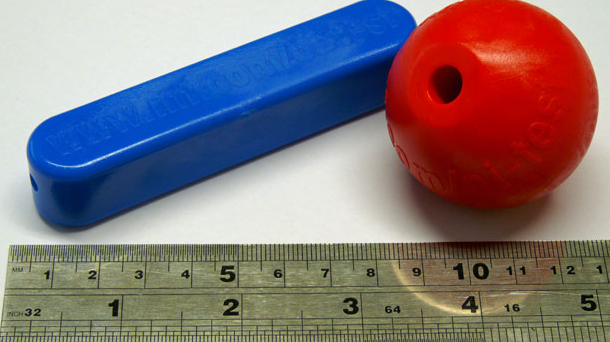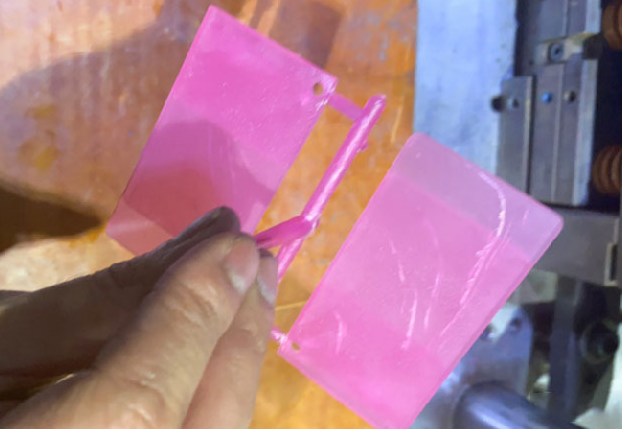The shrinkage problem in injection molding refers to the reduction in size of the plastic part as it cools and solidifies, often causing dimensional inaccuracies.
Understanding Shrinkage in Injection Molding
Definition and Causes of Shrinkage
Shrinkage in injection molding refers to the reduction in volume of a plastic part as it cools after being injected into the mold. This occurs due to the thermal contraction of the plastic material as it transitions from a high-temperature molten state to a cooler solid state. Different plastics exhibit varying shrinkage rates, typically ranging from 0.5% to 3%, depending on their composition and the molding conditions. Factors contributing to shrinkage include the type of plastic used, mold temperature, injection pressure, and cooling rate. For example, semi-crystalline plastics like polyethylene and polypropylene tend to have higher shrinkage rates compared to amorphous plastics like polystyrene due to their molecular structure.

Impact of Shrinkage on Part Dimensions and Integrity
Shrinkage can significantly affect the dimensions and the overall integrity of the molded part. Inconsistent shrinkage can lead to issues such as warping, sink marks, and dimensional inaccuracies. These defects not only compromise the aesthetic appeal but also the functional aspects of the part, particularly in precision applications where tolerances are within a few thousandths of an inch. This makes understanding and controlling shrinkage crucial for producing high-quality injection molded parts.
In conclusion, comprehending the causes and impacts of shrinkage is vital in the field of injection molding. Accurate prediction and compensation for shrinkage are essential for ensuring the dimensional accuracy and integrity of the final product. For further reading on this topic, the Injection Molding Shrinkage page on Wikipedia offers additional insights.
Materials and Shrinkage Characteristics
Variation of Shrinkage Across Different Plastics
| Plastic Type | Typical Shrinkage Rate (%) | Characteristics |
|---|---|---|
| ABS (Acrylonitrile Butadiene Styrene) | 0.4 – 0.7 | Moderate shrinkage, good dimensional stability |
| Polypropylene (PP) | 1.5 – 2.0 | Higher shrinkage, flexible and tough |
| Polystyrene (PS) | 0.4 – 0.8 | Low shrinkage, rigid and brittle |
| Nylon | 0.7 – 1.5 | Varies with moisture content, good strength and stiffness |
| Polycarbonate (PC) | 0.5 – 0.7 | Low shrinkage, high impact strength |
Material Properties Influencing Shrinkage Rates
| Property | Description | Impact on Shrinkage |
|---|---|---|
| Crystallinity | Degree of molecular order in a polymer. | Higher crystallinity, like in PP, often leads to increased shrinkage. |
| Molecular Weight | Average weight of the polymer chains. | Higher molecular weight can reduce shrinkage but may affect processability. |
| Additives | Substances added to polymers (e.g., fillers, stabilizers). | Some additives, like glass fibers, can reduce shrinkage. |
For more information on the properties of these materials, visit the Plastic Shrinkage Rates page on Wikipedia.
Mold Design Considerations for Shrinkage
Accounting for Shrinkage in Mold Dimensions
In mold design, it’s essential to account for the expected shrinkage of the plastic material. Designers typically add a shrinkage factor to the mold dimensions, ranging from 0.5% to 3%, based on the type of plastic used. For example, if a part needs to be 100mm in final size and is made from ABS with a shrinkage rate of 0.6%, the mold would be designed to be 100.6mm. This compensation ensures that the final part dimensions are accurate after shrinkage occurs.
Techniques in Mold Design to Compensate for Shrinkage
Several techniques are employed in mold design to compensate for shrinkage:
Differential Shrinkage Compensation: Different areas of the mold are designed with varying shrinkage compensations, especially for complex parts with varying wall thicknesses.
Use of Moldflow Analysis: Advanced software tools simulate the injection molding process, predicting how the material will behave in the mold and allowing designers to adjust the mold design accordingly.
Integrating Cooling Systems: Effective cooling systems in the mold can control the rate of cooling, which in turn influences shrinkage. Uniform cooling can significantly reduce the occurrence of differential shrinkage.
For more detailed information on mold design and shrinkage, refer to the Injection Molding Mold Design page on Wikipedia.
Process Parameters Affecting Shrinkage
Influence of Injection Pressure and Temperature
Injection pressure and temperature are crucial factors that significantly influence shrinkage in injection molding. Higher injection pressures, often ranging from 10,000 to 20,000 psi, can decrease shrinkage by ensuring better packing and denser material. However, excessively high pressures can lead to internal stresses and warping upon cooling. Similarly, the melt temperature, typically between 400°F to 550°F for most plastics, needs optimization. Too high a temperature can lead to more shrinkage due to increased fluidity, while too low a temperature might result in incomplete filling and higher shrinkage due to insufficient material packing.

Cooling Rate and Time’s Role in Shrinkage
The cooling rate and time are also key factors in determining the amount of shrinkage. Faster cooling rates, achieved by lower mold temperatures or efficient cooling systems, can reduce shrinkage by quickly solidifying the material. However, this needs to be balanced as overly rapid cooling can induce thermal stresses and differential shrinkage. Optimal cooling times vary but are generally proportionate to the part’s wall thickness, with thicker parts requiring longer cooling times to avoid internal stresses that can lead to deformation.
Control of these process parameters is essential for managing shrinkage and ensuring the production of dimensionally accurate and structurally sound injection molded parts. Careful balancing of pressure, temperature, and cooling rates is necessary to mitigate shrinkage-related issues. For further understanding, the Injection Molding Process Parameters page on Wikipedia offers a detailed exploration of these aspects.




